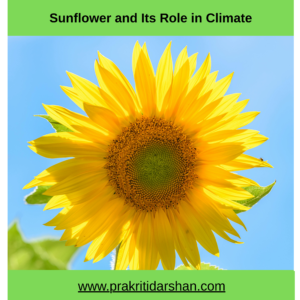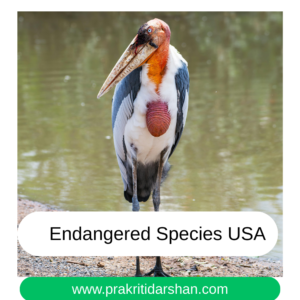Biodiversity, the foundation of life on Earth, plays a vital role in maintaining ecological balance, supporting livelihoods, and ensuring human well-being. As global biodiversity faces unprecedented threats due to habitat loss, climate change, pollution, and overexploitation, its conservation has become a central focus of international sustainability efforts. This article explores the deep interconnection between biodiversity conservation and the United Nations Sustainable Development Goals (SDGs), highlighting how protecting nature is essential for achieving targets related to poverty, hunger, health, clean water, climate action, and life on land and below water.
In-depth understanding of biodiversity levels, key threats, and global initiatives such as the Convention on Biological Diversity and the Kunming-Montreal Global Biodiversity Framework, the article emphasizes the urgent need for collective action. Real-world case studies and India’s unique contributions provide practical insights into successful conservation models. It also addresses implementation challenges and proposes forward-looking strategies involving policy reforms, grassroots participation, and youth engagement. Ultimately, the article underlines that biodiversity conservation–sustainable development is not just an environmental goal but a global imperative to secure a livable and equitable future for all.
Table of Content For “Biodiversity Conservation and Sustainable Development Goals (SDGs)” are as follows :
- Introduction
- Understanding Biodiversity
- Overview of Sustainable Development Goals (SDGs)
- Interconnection Between Biodiversity and SDGs
- Key Threats to Biodiversity
- Conservation Strategies and Global Initiatives
- Case Studies: Success Stories in Biodiversity Conservation
- India’s Role in Biodiversity and SDGs
- Role of UN Security Council Permanent Members (Veto Power Nations)
- Challenges in Implementation
- Way Forward: Policy and Community Participation
- Conclusion
- FAQs
- References
1. Introduction :Biodiversity Conservation and Sustainable Development Goals (SDGs)
Biodiversity, the variety of life on Earth, is the foundation of our planet’s health and resilience. From microscopic organisms to majestic elephants, every species plays a unique role in maintaining ecological balance. Yet, human activities are putting this rich diversity under severe threat.
In recent decades, global efforts have intensified to reverse biodiversity loss, and a key framework guiding these efforts is the United Nations Sustainable Development Goals (SDGs). These 17 SDG s goals, adopted in 2015. All 17 SDGs goals may be beneficial for sustainable future. At the heart of this vision lies biodiversity conservation–sustainable development, as the two are deeply interconnected and mutually reinforcing.
2. Understanding Biodiversity
Definition and Levels
Biodiversity refers to the variety of life across all levels of biological organization, including:
- Genetic Diversity – the variation of genes within species (e.g., rice varieties).
- Species Diversity – the variety of different species (e.g., birds, plants, fungi).
- Ecosystem Diversity – the variety of habitats and ecological processes (e.g., forests, wetlands, coral reefs).
Importance for Life on Earth
Biodiversity ensures clean air, fertile soil, pollination, food security, and even disease resistance. It also supports livelihoods, cultural traditions, and spiritual values. Without biodiversity, sustainable development becomes a distant goal, as ecosystems would collapse, economies would suffer, and human well-being would decline.
3. Overview of Sustainable Development Goals (SDGs)
What Are the SDGs?
The SDGs are a universal set of 17 goals launched by the United Nations in 2015 to eradicate poverty, protect the planet, and ensure prosperity for all by 2030. These goals cover everything from clean energy and education to climate action and ecosystem restoration.
Biodiversity-Linked Goals
Among these, SDG 13 (Climate Action), SDG 14 (Life Below Water), and SDG 15 (Life on Land) are directly connected to biodiversity. They emphasize the urgent need to protect terrestrial and marine ecosystems.
4. Interconnection Between Biodiversity Conservation and Sustainable Development
Biodiversity conservation is not limited to a few environmental goals—it underpins the success of many SDGs:
- SDG 1 – No Poverty: Forests and marine ecosystems provide livelihoods opportunities to 1.6 billion people or more .
- SDG 2 – Zero Hunger: Biodiversity in crops and livestock is essential for sustainable agriculture and food security.
- SDG 3 – Good Health and Well-being: Many life-saving medicines are derived from natural compounds found in forests and oceans.
- SDG 6 – Clean Water and Sanitation: Wetlands, rivers, and forests act as natural filters, ensuring water purity.
- SDG 13 – Climate Action: Healthy ecosystems absorb carbon and mitigate climate change impacts.
- SDG 14 & 15 – Life Below Water & Life on Land: These goals directly aim to protect marine and terrestrial ecosystems and halt biodiversity loss.
Clearly, biodiversity conservation–sustainable development is a relationship of necessity and survival.
5. Key Threats to Biodiversity
Despite global awareness, biodiversity is under serious threat due to human-induced pressures:
- Habitat Destruction: Urban expansion, deforestation, and infrastructure development are wiping out natural habitats.
- Climate Change: Rising temperatures and extreme weather events are altering habitats and threatening species survival.
- Pollution: Plastics, chemicals, and agricultural runoff are degrading land and water ecosystems.
- Invasive Species: Non-native species introduced by human activity disrupt local ecosystems.
- Overexploitation: Overfishing, hunting, and unsustainable harvesting push species toward extinction.
Without immediate action, these threats could push over a million species into extinction in the coming decades.
6. Biodiversity Conservation and Sustainable Development : Strategies and Global Initiatives
In-situ and Ex-situ Conservation :
- In-situ Conservation: The preservation of species within their native ecosystems, allowing them to thrive in their natural environment. Protected areas examples are as wildlife sanctuaries and national parks etc .
- Ex-situ Conservation: Breeding and preserving species outside their natural environments, such as botanical gardens, seed banks, and zoos.
Protected Areas and Biosphere Reserves
Many countries have established protected areas to conserve ecosystems and endangered species. Biosphere reserves integrate conservation with sustainable resource use, benefiting both nature and people.
Major Global Initiatives
- Convention on Biological Diversity (CBD): An international treaty for biodiversity conservation, sustainable use, and equitable benefit sharing.
- Aichi Biodiversity Targets: A set of 20 goals under CBD aimed at halting biodiversity loss (2011–2020).
- Kunming-Montreal Global Biodiversity Framework (2022): A new pact to conserve 30% of Earth’s land and oceans by 2030.
- UN Ecosystem Restoration (2021–2030): A global effort to restore degraded ecosystems and strengthen biodiversity.
7. Case Studies: Success Stories in Biodiversity Conservation and Sustainable Development
Gir National Park Gujrat and the Asiatic Lion (India)
Once on the brink of extinction, the Asiatic lion population has rebounded due to effective habitat protection and community participation.
Costa Rica’s Forest Restoration
Costa Rica reversed its deforestation trend through eco-tourism, payment for ecosystem services, and sustainable farming, making it a global model.
Marine Protected Areas in Australia
The Great Barrier Reef Marine Park is a successful example of balancing biodiversity protection with tourism and fishing regulations.
These stories reflect how targeted efforts and inclusive policies can result in tangible conservation success.
8. India’s Role in Biodiversity Conservation and Sustainable Development
India is one of the world’s 17 megadiverse countries, home to over 90,000 animal species and 45,000 plant species.
Key Policies and Programs
- National Biodiversity Action Plan (NBAP): India’s strategy for implementing CBD commitments.
- Biological Diversity Act, 2002: A landmark legislation promoting conservation, sustainable use, and equitable benefit sharing.
- People’s Biodiversity Registers: Grassroots documentation of local biodiversity and traditional knowledge.
Community and Cultural Conservation
India’s deep cultural connection with nature has resulted in practices like:
- Sacred Groves: Forest patches preserved for religious reasons.
- Chipko Movement: A non-violent forest conservation movement that emphasized the value of forests for communities.
India also plays a important global role in biodiversity conservation .
9. Role of UN Security Council Permanent Members (Veto Power Nations) in Biodiversity and SDGs
The permanent five members of the United Nations Security Council (P5) are United States , China, France, Russia and the United Kingdom . Their national policies and international commitments greatly impact the global efforts to conserve biodiversity and achieve Sustainable Development Goals.
In short go through the following details :
A. United States
- Climate and Biodiversity Re-engagement: Under the Biden administration, the U.S. rejoined the Paris Agreement and endorsed nature-based solutions for climate and conservation.
- Funding and Research: Largest contributor to Global Environment Facility (GEF) and other UN environmental programs.
- Limitations: The U.S. has not ratified the Convention on Biological Diversity (CBD) but participates in many initiatives through alternative frameworks.
B. China
- Major Contributor to Global Biodiversity Talks: Host of the COP15 Biodiversity Summit (2021–22) in Kunming, where the Kunming-Montreal Global Biodiversity Framework was launched.
- Ecological Civilization Policy: China emphasizes green development and has invested heavily in reforestation and ecosystem restoration.
- Belt and Road Initiative (BRI): While controversial for environmental impacts, China has started incorporating Green BRI standards for sustainable infrastructure abroad.
C. France
- Champion of Climate and Biodiversity Finance: France is a leading funder of environmental initiatives, especially in Africa and the Francophone world.
- One Planet Summit: Initiated global biodiversity discussions, including marine conservation and protected areas.
- European Union Advocacy: As part of the EU, France supports ambitious biodiversity targets and promotes circular economy and agroecology.
D. Russia
- Rich Biodiversity Zones: Russia houses vast forests (e.g., boreal taiga), tundra, and freshwater systems, playing a major role in global carbon sinks.
- Protected Areas Network: Russia maintains one of the world’s largest networks of protected areas. Zapovedniks is a strict nature reserves of Russia.
- Challenges: Political instability, industrial expansion, and limited civil society engagement affect its effectiveness in biodiversity diplomacy.
E. United Kingdom
- Global Biodiversity Leadership: Co-leader of the Leaders’ Pledge for Nature and supporter of the 30×30 global goal (protect 30% of land and sea by 2030).
- Biodiversity and Development Aid: United Kingdom Darwin Initiative and UK Aid and it funds or financial support is also playing a key role in biodiversity projects .More than 100 countries are working for biodiversity with this aid or grant .
- Domestic Conservation Laws: Post-Brexit, UK has committed to developing independent environmental standards and watchdogs.
Integration with SDGs
Each of these P5 nations plays a role in directly or indirectly supporting the following SDGs through their biodiversity and climate-related actions:
| Country | Relevant SDGs Supported | Example Initiatives |
| China | 13, 15, 17 | Kunming COP15, Green BRI |
| France | SDG14, SDG15 and SDG 17 | One Planet Summit and EU Biodiversity Strategy are key initiatives. |
| Russia | 13, 15 | Zapovednik Reserves, Boreal Forest Carbon Sink |
| UK | SDG14, SDG15 and SDG17 | Leaders’ Pledge for Nature and UK Aid for Biodiversity are key initiatives . |
| USA | 13, 14, 15 | GEF funding, Nature-Based Climate Solutions |
10. Challenges in Implementation
Despite widespread recognition of the importance of biodiversity, implementing effective conservation strategies faces several real-world challenges. These hurdles must be addressed urgently to align biodiversity conservation with sustainable development.
Policy Enforcement Gaps
Many countries have well-framed environmental laws, but lack the mechanisms to implement and monitor them effectively. Weak enforcement results in illegal logging, mining, poaching, and encroachment of protected areas.
Funding Limitations
Biodiversity conservation projects often suffer from inadequate and inconsistent funding. Developing countries, in particular, face difficulties in financing ecosystem restoration, species protection, and community-based conservation efforts.
Conflict Between Development and Conservation
Infrastructure expansion, urbanization, and industrial activities frequently clash with ecological priorities. When development is prioritized over environment, forests are cleared, wetlands are drained, and biodiversity is sacrificed.
Lack of Awareness at Grassroots Levels
In many regions, local communities are unaware of the value of biodiversity and the long-term benefits of conservation. This knowledge gap limits public participation and weakens support for policy interventions.
11. Way Forward: Policy and Community Participation
To achieve the Biodiversity and SDGs goals and ground realities, a multidimensional approach and dialogue and International policy making are essential. Strengthening institutional frameworks and empowering communities are vital steps toward achieving biodiversity conservation–sustainable development.
Strengthening Local Governance
Decentralizing environmental governance empowers local bodies to protect biodiversity in their regions. Community awareness and community led monitoring and community decision-making can ensure sustainable use of natural resources.
Integrating Biodiversity in Development Planning
Biodiversity must be considered in all sectors—urban planning, agriculture, transportation, and industry. Environmental Impact Assessments (EIAs) should be mandatory and transparent to prevent ecological damage.
Capacity Building and Awareness Programs
Training for local leaders, farmers, students, and forest dwellers helps build a conservation-oriented culture. Awareness campaigns can foster a sense of responsibility and encourage eco-friendly practices.
Role of Youth, NGOs, and Research Institutions
Youth movements are powerful drivers of change. NGOs and academic institutions can offer expertise, innovation, and on-ground support for biodiversity initiatives, ensuring science-based and socially just solutions.
12. Conclusion
Biodiversity conservation is not just about saving species—it is about safeguarding life, livelihoods, and the future of our planet. As ecosystems deteriorate, so do the prospects of sustainable development.
Embracing biodiversity conservation–sustainable development as a unified goal is essential to build resilient societies and climate-proof economies. Governments, businesses, civil society, and individuals all share the responsibility to protect nature. By working together, we can preserve Earth’s rich biological heritage and ensure a just, livable world for present and future generations.
13. Frequently Asked Questions (FAQs)
Q1. Why is biodiversity important for human survival?
A: Biodiversity ensures ecosystem services such as food, water, climate regulation, and disease control.
Q2. Which SDGs directly focus on biodiversity?
A: SDG 14 (Life Below Water) and SDG 15 (Life on Land) primarily, along with indirect links to several others.
Q3. What is the Kunming-Montreal Global Biodiversity Framework?
A: Kunming-Montreal Global Biodiversity Framework is a global pact adopted in 2022. To reverse biodiversity loss by 2030.
Q4. How can individuals contribute to biodiversity conservation?
A: By reducing plastic use, supporting local conservation groups, planting native species, and spreading awareness.
Q5. What are ecosystem services?
A: Benefits humans derive from nature, like pollination, water purification, and climate regulation.
Q6. What role do indigenous communities play in biodiversity?
A: Indigenous practices and traditional knowledge is very supportive for conservation and sustainable use of biodiversity.
Q7. What is in-situ vs. ex-situ conservation?
A: In-situ refers to protecting species in their natural habitat. ex-situ is off-site conservation like zoos or seed banks.
Q8. How does climate change affect biodiversity?
A: It alters habitats, disrupts migration and breeding patterns, and causes species extinction.
Q9. What is India’s legal framework for biodiversity protection?
A: The Biological Diversity Act, 2002, along with the National Biodiversity Authority.
Q10. How are SDGs monitored in terms of biodiversity?
A: Through national reporting mechanisms, indicators, and integration into environmental and development planning.
13. References
- Convention on Biological Diversity. https://www.cbd.int
- United Nations SDGs. https://sdgs.un.org
- India State of Forest Report 2021
- IPBES Global Assessment Report on Biodiversity and Ecosystem Services (2019)
- Ministry of Environment, Forest and Climate Change (MoEFCC), Government of India
- www.atlus.org
- IUCN
PRAKRITI DARSHAN-NATURE AND ENVIRONMENT MAGAZINE
Prakriti Darshan is a leading Hindi-language magazine and digital platform dedicated to raising public awareness on vital issues related to nature, biodiversity, climate change, sustainable development, and environmental conservation. This magazine represents a unique blend of science, society, and sensitivity—offering a common platform for researchers, students, NGOs, policymakers, nature lovers, and conscious citizens alike.
With thought-provoking articles, inspiring stories, environmental research, impactful projects, and policy perspectives, Prakriti Darshan is a transformative journey toward a greener and more sustainable future.
Let us come together to protect and preserve our planet for generations to come. 🌿🌍
Join us in our mission to protect and celebrate the planet. 🌏💚
Click for more information
- Visit www.prakritidarshan.com for Free Magazine ,Free membership benefits ,offered price magazine @ Rs.1 or Rs.11 only and more ……
- 🎗️Sponsor Prakriti Darshan Magazine – Support our environment mission.
- 📚 Explore the Environment Magazine – Read our latest and past issues.
- ✍️ Read Editor’s Article or Blog – Insightful thoughts from our editorial desk.
- 🌱 Join Membership – Be part of India’s leading green community.
- 🤝 Become an NGO Impact Story Partner – Share your grassroots impact nationwide.
- 🏢 Become a Company Partner – Showcase your CSR, ESG, or sustainability work.
- 👤 Become an Individual Partner – Volunteer, write, and raise your green voice.
- 📢 Advertise with Us – Reach eco-conscious readers across India.
- Eco Trails Newsletter
- Donate for “Hari Ho Vashundhara & Har school Hariyali “ Plantation campaign Associated Partner NGO :GDSS NGO www.gdssngo.org
BALA DATT SHARMA,
MANAGING EDITOR ,
PRAKRITI DARSHAN-NATURE AND ENVIRONMENT MAGAZINE
- Indoor Plants – Money Plants – Benefits, Care & Top 15 Plants with Special Focus on Money Plants - September 12, 2025
- Sunflower and Its Role in Climate: A Comprehensive Study on Uses, Benefits, and Global Importance - September 12, 2025
- Endangered Species USA – Conservation Challenges, Data, and Future of Wildlife - September 11, 2025







